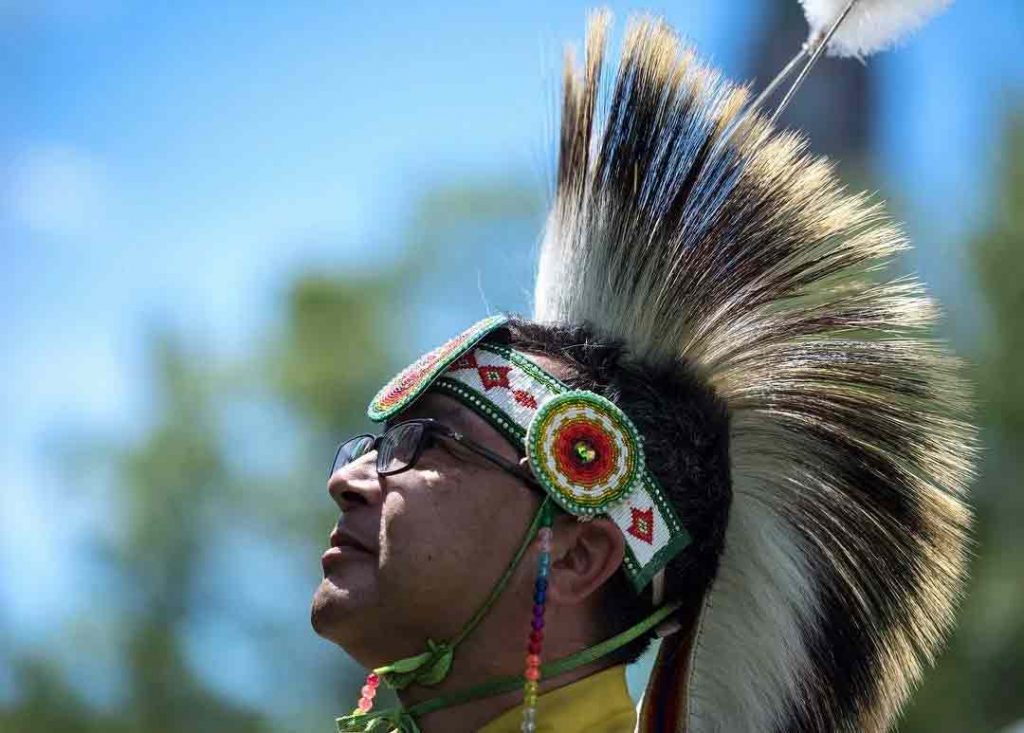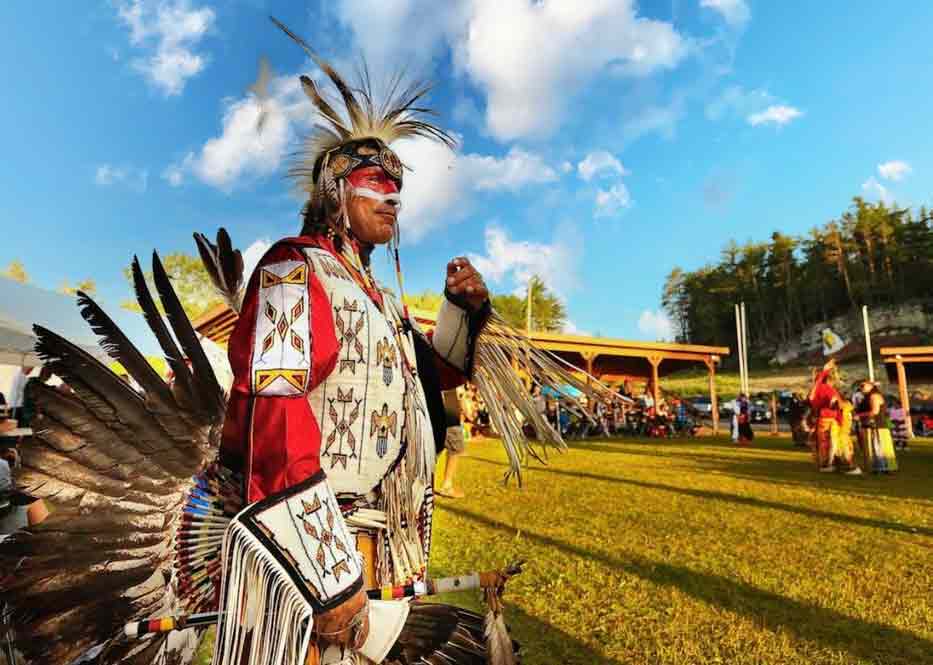Aboriginal Day Live & Celebration is an annual event that celebrates the rich culture, heritage, and contributions of Indigenous peoples in Canada. The event coincides with National Indigenous Peoples Day, which is observed on June 21, the summer solstice. Formerly known as National Aboriginal Day, the name was changed to National Indigenous Peoples Day in 2017 to reflect a more inclusive and respectful terminology. Aboriginal Day Live & Celebration showcases the diverse talents of Indigenous artists, musicians, and performers from across the country, providing a platform for cultural expression and community engagement.
History of Aboriginal Day Live & Celebration
Aboriginal Day Live & Celebration first began in 2007 as a small event hosted by the Aboriginal Peoples Television Network (APTN) outside their headquarters in Winnipeg, Manitoba. The event was created to celebrate and showcase the talents of Indigenous musicians and artists on National Aboriginal Day. Over the years, the celebration has grown in size and scope, expanding to include multiple cities across Canada and featuring a wide range of Indigenous performers from various regions and nations.
The event has become a significant part of National Indigenous Peoples Day celebrations, bringing together Indigenous communities and allies to honour the unique cultures, traditions, and achievements of First Nations, Inuit, and Métis peoples. As the celebration has evolved, it has also adapted to changing social and cultural contexts, reflecting the ongoing efforts to promote understanding, respect, and reconciliation between Indigenous and non-Indigenous peoples in Canada. In 2017, Aboriginal Day Live & Celebration was renamed to APTN Indigenous Day Live to reflect the broader celebration of all Indigenous cultures in Canada.
Cultural Reflections in Gambling
Gambling, while often seen as a mere form of entertainment, can also reflect deeper cultural dynamics and challenges. Just as cultural celebrations must navigate complex societal values, the online casino industry faces a similar challenge, balancing entertainment with social responsibility and the potential risks of addiction. This intersection highlights the ongoing dialogue between traditional practices and modern leisure activities. For a deeper look at how these dynamics play out in specific regions, study Saskatchewan’s online casino history vs national trends, which details the evolution of gambling practices within the cultural and legal frameworks of the area.
National Indigenous Peoples Day and Its Celebration in Canada

National Indigenous Peoples Day was first established in 1996 by then Governor General Roméo LeBlanc, following consultations with Indigenous organizations and leaders. The day was initially called National Aboriginal Day and was created to recognize and celebrate the diverse cultures, heritage, and contributions of Indigenous peoples to Canadian society.
June 21, the summer solstice, was chosen as the date for the celebration due to its cultural and spiritual significance for many Indigenous communities. The summer solstice is the longest day of the year and has traditionally been a time for ceremonies, gatherings, and aboriginal celebrations among Indigenous peoples.
In 2017, the Canadian government officially changed the name of the day to National Indigenous Peoples Day, acknowledging the importance of using more inclusive and respectful terminology. The change also aligned with the language used in the United Nations Declaration on the Rights of Indigenous Peoples, which Canada had officially endorsed in 2016.
Past Events and Highlights
Since its inception in 2007, Aboriginal Day Live & Celebration has featured a diverse array of performances, cultural showcases, and community events in cities across Canada. Each year, the celebration has grown in scope and significance, bringing together Indigenous artists, musicians, and performers from various regions and nations to honour the rich heritage and contemporary achievements of First Nations, Inuit, and Métis peoples.
2007: Inaugural Celebration
Aboriginal Day Live & Celebration began as a small event hosted by the Aboriginal Peoples Television Network (APTN) outside their headquarters in Winnipeg, Manitoba. The inaugural celebration featured live performances by Indigenous musicians and artists, showcasing the talents and creativity of the local community.
2008-2010: Growth & Expansion
Over the next few years, Aboriginal Day Live & Celebration continued to grow and expand, attracting larger audiences and featuring a more diverse range of performers. In 2009, the event moved to the historical Forks site in Winnipeg and introduced a second stage in Whitehorse, Yukon. The 2010 celebration saw further expansion, with stages in both Winnipeg and Ottawa, Ontario, and performances by acclaimed artists such as Chantal Kreviazuk, Keith Secola, and Tumivut.
2011-2013: Celebrating Across Canada
As Aboriginal Day Live & Celebration gained momentum, the event began to reach new audiences across Canada. In 2012, the celebration expanded to include stages in Winnipeg and Regina, Saskatchewan, featuring a wide range of cultural performances, traditional demonstrations, and family-friendly activities. The 2013 event continued this trend, with stages in Winnipeg, Iqaluit, and Nunavut showcasing the diversity of Indigenous cultures from coast to coast.
2014-2016: Engaging Communities
From 2014 to 2016, Aboriginal Day Live & Celebration continued to engage Indigenous communities and allies through a variety of performances, workshops, and cultural activities. The 2014 event featured stages in Winnipeg and Halifax, Nova Scotia, while the 2015 celebration included concerts in Winnipeg and Edmonton, Alberta, with notable performances by artists such as Buffy Sainte-Marie, Crystal Shawanda, and George Leach. In 2016, the event returned to its roots in Winnipeg, celebrating its 10th anniversary with a focus on the theme “Celebrating Our Lands.”
2017: Expanding to Eight Cities
2017 marked a significant milestone for Aboriginal Day Live & Celebration, as the event expanded to eight cities across Canada, making it the largest celebration of National Indigenous Peoples Day in the country’s history. The host cities included Halifax, Montréal, Ottawa, Toronto, Winnipeg, Yellowknife, Edmonton, and Vancouver, each featuring a unique blend of daytime activities and evening live concerts. Notable performers included Nelly Furtado, Classified, and Taboo from the Black Eyed Peas.
2018-2019: Continuing the Tradition
In 2018 and 2019, Aboriginal Day Live & Celebration continued to bring together Indigenous communities and allies to celebrate the richness and resilience of Indigenous cultures. The 2018 event featured celebrations in Winnipeg, Toronto, and Ottawa, while the 2019 celebration included stages in Winnipeg, Calgary, and Whitehorse. Each year, the event showcased a diverse array of Indigenous artists, musicians, and performers, providing a platform for cultural expression and community engagement.
2020-2021: Adapting to the Pandemic
Due to the COVID-19 pandemic, APTN Indigenous Day Live adapted its format to ensure the safety of performers and audiences. In 2020, the event pivoted to a virtual celebration called “APTN Indigenous Day Live Winter Solstice,” featuring performances by artists such as Alanis Morissette and Don Amero. The 2021 celebration continued in a virtual format, with performances streamed live on APTN and its various platforms.
2022-2023: Returning to In-Person Celebrations
As public health conditions improved, APTN Indigenous Day Live began to reintroduce in-person events while maintaining a strong virtual presence. The 2022 celebration featured a hybrid format, with a return to an in-person event at The Forks in Winnipeg alongside virtual performances and livestreams. The 2023 event is set to continue this trend, with plans for an in-person celebration in Winnipeg focused on the theme “Celebrating Our Youth” and featuring a mix of live and virtual performances.
Upcoming Event in 2024

While specific details for the 2024 APTN Indigenous Day Live have not yet been announced, the event is expected to continue its tradition of bringing together Indigenous communities and allies to celebrate the richness and resilience of Indigenous cultures. As the event organizers continue to plan for the future, they remain committed to showcasing the diverse talents of Indigenous artists and creating spaces for cultural exchange and understanding.
In previous years, the event has incorporated virtual performances and livestreams to reach a wider audience and ensure accessibility for those unable to attend in person. It is likely that the 2024 event will continue to leverage technology to engage participants from across Canada and beyond.
For the most up-to-date information on the upcoming 2024 APTN Indigenous Day Live celebration, visit the official APTN website.
Become a Part of Indigenous Culture
There are several ways to take part in APTN Indigenous Day Live:
Attend in person:
- Stay informed about event locations, dates, and schedules.
- Plan for transportation and accommodations.
- Follow any public health guidelines and safety protocols.
Watch the live broadcast:
- Tune in to APTN and its various platforms.
- Experience the performances and celebrations from home.
- Look for live streams on social media and other online platforms.
Participate as an artist, performer, or vendor:
- Check the official event website or APTN’s communication channels for application information.
- Look for calls for submissions, typically announced several months in advance.
- Opportunities available for both established and emerging talents to showcase their work.
By engaging with APTN Indigenous Day Live through one or more of these methods, individuals can actively participate in celebrating and supporting Indigenous culture, heritage, and artistic expression.
